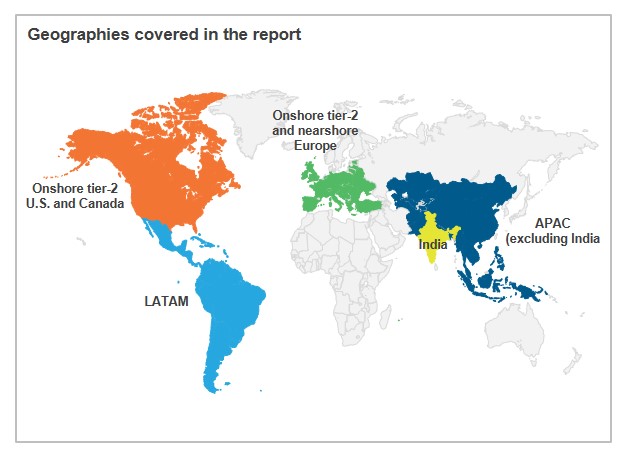Impact of AI on Technology Talent: Strategic Imperatives for Staffing Firms to Stay Competitive and Relevant in AI-First talent market | Blog

The rise of artificial intelligence (AI) and automation is fundamentally changing the talent market. As AI transforms the skills and roles businesses require, staffing firms face both challenges and opportunities.
Many traditional entry-level roles are evolving while new, specialized positions are emerging. As per our research, entry-level jobs account for 20-25% of the sourcing portfolio of staffing firms. As AI continues to influence workplace demands, staffing firms that rely heavily on high-volume placements may now need to adapt their strategies.
While some routine roles may see reduced demand, new opportunities are emerging in AI-enhanced job functions. Firms that proactively identify these evolving roles, build sourcing capabilities for specialized talent, and integrate learning and development into their services will strengthen their position in the era of an AI-driven workforce.
Reach out to discuss this topic in depth.
“The advancements in AI have been remarkable, our engineering productivity has increased by 30%, which means we don’t currently require more software engineers. AI has fundamentally changed how we work”
- Marc Benioff, CEO, Salesforce
“We have seen product development cycles for engineering-related clients quicken by as much as 20% and expect further improvement. We are using Generative AI for code generation, testing, and quality assurance which are low-hanging fruits right now”
- Leading IT service provider
“Skill gaps are categorically considered the biggest barrier to business transformation by Future of Jobs Survey respondents, with 63% of employers identifying them as a major barrier over the 2025- 2030 period. While global job numbers are projected to grow by 2030, existing and emerging skills differences between growing and declining roles could exacerbate existing skills gaps. Given these evolving skill demands, the scale of workforce upskilling and reskilling expected to be needed remains significant”
- World Economic Forum, The Future of Jobs Survey 2025
Explore how Everest Group’s 3C framework can help staffing firms assess the impact of AI on talent…

Create: AI is opening entirely new categories of work, introducing roles, functions, and capabilities that didn’t exist before
While AI is automating some tasks, it is also creating new job opportunities. Demand for advanced positions such as AI / Machine Learning (ML) engineers, AI infrastructure architects, and applied AI researchers is growing rapidly. These roles involve building scalable models, deploying AI at enterprise scale, and driving innovation through deep learning and generative techniques.
Businesses are also hiring for emerging roles, including AI ethics specialists, AI trainers, prompt engineers, human-AI interaction designers, and Chief AI Officers (CAIOs). These roles focus on ensuring AI is deployed responsibly, improving AI models through human feedback, and enhancing collaboration between AI and human teams.
Change: AI is reshaping how existing tasks are performed, leading to shifts in responsibilities, tools, and workflows
AI is not just automating jobs anymore; it is also changing the nature of existing roles, requiring professionals to adopt new skills. As per BCG analysis, 90% of tech roles are expected to be impacted by AI, with a significant impact expected in app development.
Software engineers, DevOps professionals, cloud architects, and cybersecurity analysts must now integrate AI-driven tools into their workflows. Instead of writing all code manually, software developers are leveraging AI-powered code suggestions and automation tools, allowing them to focus on more complex problem-solving. DevOps teams are also using AI for predictive monitoring, and cybersecurity experts must now anticipate AI-driven cyber threats. These changes mean that traditional job descriptions are evolving, making AI literacy a crucial requirement in many fields. The AI talent race is significantly impacting the technology talent market. In the US, 25% of tech job listings in 2025 are expected to require AI-related skills (Wall Street Journal).
Consume: AI is taking over repetitive, rule-based tasks, changing the demand patterns for certain job types and functions
AI-driven automation is reshaping certain roles, particularly those involving repetitive and rule-based tasks. Roles such as manual testers, Information Technology (IT) support engineers, and helpdesk professionals are increasingly being augmented or replaced by AI-driven systems. These positions often involve predictable and structured workflows, making them highly susceptible to automation. As AI-powered chatbots and self-service platforms improve, the need for human intervention in these roles is declining.
As artificial intelligence reshapes the business landscape, staffing firms find themselves at the intersection of disruption and opportunity
While AI offers immense potential to create value, it also challenges staffing providers to rethink their role in a fast-evolving ecosystem. Understanding the implications of this shift is critical to staying competitive, relevant, and resilient.
- Decline in demand for high-volume, routine roles
AI and automation are rapidly taking over repetitive, rule-based tasks. Roles such as manual testers, entry-level software engineers and IT support engineers are becoming increasingly susceptible to automation, reducing demand in these job categories.
- Surge in AI-native and augmented roles
While some roles disappear, others are being created or fundamentally redefined. New positions like AI trainers, prompt engineers, and Chief AI Officers (CAIOs) are gaining traction, alongside evolved roles like cloud engineers and cybersecurity analysts who now require AI literacy.
- Talent shortages
The demand-supply gap in AI-related roles is substantial, with some estimates suggesting a shortfall of 30–35%. As a result, professionals with in-demand AI skills command a salary premium of 20–30%. As AI-enhanced roles are more complex, more strategic, and in high demand, they offer greater margins and long-term business value for firms able to source them effectively.
Assess and act: Strategy for future-ready staffing firms
In response to these industry-wide shifts, staffing providers need a two-pronged approach: first, to assess their current state and exposure, and second, to act with precision, aligning capabilities to future needs. This structured approach will enable firms to pivot from reactive hiring to proactive talent enablement in an AI-first economy.
Staffing firms should begin by evaluating their business and operational models through the lens of AI disruption
- Portfolio exposure and risk audit
Analyze the firm’s current sourcing mix to determine what proportion of placements fall under high-risk, automatable roles. Leverage the Everest Group 3C framework. Identify segments vulnerable to AI disruption and quantify potential revenue impact.
- Talent capability and internal readiness
Review recruiter competencies and sourcing practices. Evaluate how well the team understands AI-native and hybrid roles, including job requirements, sourcing channels, and candidate expectations.
- Skilling infrastructure and enablement
Assess the maturity of existing learning and development offerings. Do internal teams have the ability to train recruiters and candidates on emerging tech skills? Is there a structured skilling framework in place?
- Client readiness and engagement mapping
Gauge client AI adoption maturity. Understand where clients are on their digital transformation journey and how staffing solutions can evolve to support them in navigating workforce transitions.
Staffing firms must take focused, strategic actions aligned with the evolving technology talent market landscape that position them as readiness enablers and trusted partners in their clients’ AI transformation journeys
- Establish a dedicated AI talent practice
Build specialized sourcing teams focused on high-demand AI and automation roles, from machine learning engineers and AI architects to ethics officers and prompt engineers. Invest in market intelligence services or tools to enhance sourcing speed and accuracy.
- Integrate learning and development into talent delivery
With AI talent in short supply and external hiring becoming increasingly competitive and costly, staffing firms can no longer rely solely on traditional sourcing models. Instead, they must proactively build talent pipelines through integrated skilling. Develop or partner to offer targeted programs in high-demand areas such as machine learning, AI infrastructure, automation tools, and prompt engineering. These programs should serve both candidate pools and client-side teams preparing for AI adoption. Embed Learning and Development (L&D) into delivery models like “hire-train-deploy,” ensuring candidates are job-ready with AI-specific capabilities before placement. Rather than being a value-add, skilling must become a core pillar of the staffing value proposition.
- Offer AI workforce advisory services
Expand the scope of services to include talent strategy consulting. Help clients redefine roles, develop competency frameworks, and implement future workforce models. Use AI talent market insights to guide their talent transformation roadmaps.
Staffing firms that proactively adapt to these changes by focusing on quality talent sourcing, bridging skill gaps, and engaging in strategic partnerships will position themselves as key players in the evolving employment landscape. The future of staffing is not just about filling positions but about enabling the workforce to succeed in an AI-driven world.
If you found this blog interesting, check out our Navigating The Agentic AI Tech Landscape: Discovering The Ideal Strategic Partner | Blog – Everest Group, which delves deeper into another topic regarding AI.
To gain further insights into how the leading service providers are transforming their workforce strategies to extensively focus on enhancing the project-readiness element, reach out to Priyanka Mitra [email protected], Amit Anand [email protected], Dileep Amanchi [email protected], and Abhigyan Kumar [email protected]